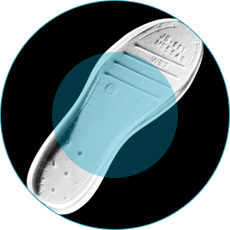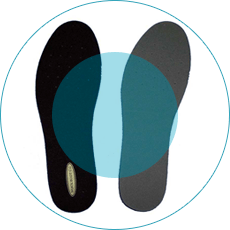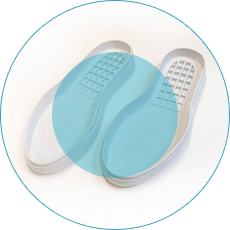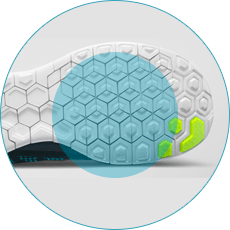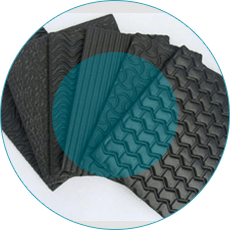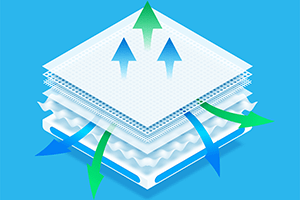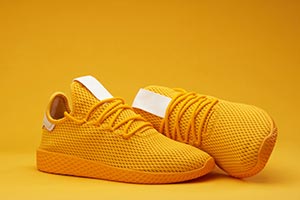There are only a lucky few among us that are complete and utter strangers to back pain. The rest of us – around 80 percent of adults, to be precise – have dealt with back pain at one point in our lives.
And while sometimes the cause can be quite evident other times, the culprit can be something far less obvious, as well – such as your feet.
Since you’re here, reading this, I’m guessing you already know that your pain falls into the latter, less-obvious category, which means it’s time to find you the best shoes for back pain – and fast!
 Can Shoes Help With Back Pain Relief?
Can Shoes Help With Back Pain Relief?  Best Shoes For Back Pain 2021: A Quick Comparison Chart
Best Shoes For Back Pain 2021: A Quick Comparison Chart  Best Shoes for Back Pain in 2021: Top 10 Reviews & Recommendations
Best Shoes for Back Pain in 2021: Top 10 Reviews & Recommendations  How To Pick The Best Shoes For Back Pain: A Detailed Buyer’s Guide
How To Pick The Best Shoes For Back Pain: A Detailed Buyer’s Guide  Footwear & Back Pain: Where’s The Connection?
Footwear & Back Pain: Where’s The Connection?  Frequently Asked Questions (FAQs)
Frequently Asked Questions (FAQs)
Can Shoes Help With Back Pain Relief?

It might come as a surprise, but shoes aren’t only supposed to fit your feet – they should fit your back, too. Simply put, when you pick the right shoes, everything else falls into place naturally – and that’s what makes such a significant impact on back pain!
Now, I’m going to get into details about finding the best shoes for back pain later on in the article, but for now, let’s take a moment to address some less known – and often overlooked – tips for ensuring that your shoes are actually good for your feet, plantar fasciitis and ultimately, your back:
-
Go Shoe Shopping In The Afternoon
Our feet tend to expand and swell up a bit as the day goes by, and what fits us comfortably in the morning may not be as good of a fit by the end of the day. That’s why I always recommend going shoe shopping in the afternoon when your feet are at their “biggest.”
-
Just Because They’re Flat, Doesn’t Mean They’re Good For Your Back
Don’t fall into the trap of thinking flat shoes are a better option than 4-inch stilettos – not all flat shoes are a suitable choice for your feet, because some may lack essential arch support.
-
Finding The Right Fit Is Essential
Did you know most people have one foot that’s larger than the other? Plus, our feet tend to grow wider as we age. So, to ensure you’re getting the right fit, you should get in the habit of getting your feet measured by a professional whenever you go shoe shopping.
-
Replace Your Shoes As Needed
Remember that no matter how well-made they are your shoes won’t last forever. And once they start showing signs of wear and tear, it usually means they don’t support your feet as good as they used to – which could cause problems in the long run.
-
Go With Comfort Level Rather Than Shoe Size
Shoe sizes may vary from brand to brand, which is why it’s important to trust your comfort level, rather than the description.
-
Maybe You’ll Need Orthotics, Too
Another thing you should keep in mind is that, in some cases, a new pair of shoes won’t be enough to solve your problems – and you might need prescription orthotics because they’re specially made to address issues caused by abnormal foot mechanics.
Now, it may sound like shoes are this magic solution to all your problems, but remember that it’s your body that does all the work here. Proper shoes can’t heal you – they might help the dust settle, but it’s your body that heals itself.
Best Shoes For Back Pain: A Quick Comparison Chart
Before we go any further, I’d like to take a moment to go over the best shoes for back pain in 2021, and see how they perform in a side-by-side comparison:
Best Shoes for Back Pain in 2021: Top 10 Reviews & Recommendations

Here’s a quick disclaimer before we get on with the actual best shoes for back pain reviews: I wanted to include both men’s and women’s shoes in my round-up, and since I couldn’t try the women’s models myself, I asked a friend to “test them out” for me.
New Balance Women’s FuelCore Nergize V1 Cross TrainerKeeping A Low Profile
Okay, ladies first!
New Balance has been a staple in the athletic shoe industry for quite some time now, and with good reason, too – but thanks to their clean-lined silhouette they can be your go-to everyday shoes, as well!
The REVlite midsole foam ensures that you get the cushioning and stability you need if you’re up on your feet a lot, without making the shoes bulky or heavy in the process.
And while some may appreciate the extremely low-profile sides – especially if they’re used to having athletic shoes dig into their ankles – I know others may be a bit hesitant about the cut due to the lack of ankle support, so I figured I’ll point it out, and let you make your choice.

Unfortunately, though, these started developing creases around the toe box area relatively fast, and while it may not affect the overall comfort of the shoes, it does ruin their appearance, which is a shame.

- REVlite midsole provides cushioning without making them bulky
- NB Memory Sole Comfort inserts are included
- They have a clean-lined slip-on silhouette
- The toe box is pretty roomy
- No break-in period needed
- They’re lightweight with extremely low-profile sides

- They started creasing relatively fast
The extremely low-profile is not everyone’s cup of tea, but if you always preferred that over the deep, dig-into-your-ankle fit, I’m sure you’ll love the New Balance Women’s FuelCore Nergize V1 Cross Trainer.
ASICS Men’s GEL Venture 5 Running ShoeSupport in All the Right Places
When a solid pair of running shoes is all you need, it’s always a good idea to turn to reliable brands that have been in the business of making athletic footwear for quite some time now – and ASICS is an excellent example of that.
Featuring the GEL Cushioning System and removable sock liners that can accommodate medical orthotics, these shoes are all about supporting your feet in all the right places.
I have to point out that the soles and the upper feel stiff, which can be both a blessing and a curse – while it does make the shoes feel more durable and stable, it also makes them somewhat uncomfortable at first.
Anyway, it’s up to you to decide whether that’s a pro or a con.

Oh, and the shoelaces are annoyingly slippery, and they keep getting undone. It’s more of an inconvenience than a legitimate flaw, but I figured you should know about it, anyway.

- They feature GEL Cushioning System for a responsive stride
- Trail-specific rugged outsole is suitable for various terrains
- The sock liner is removable so that they fit medical orthotics
- Reasonably priced

- The shoelaces keep getting undone
- The upper and the soles feel rather stiff
- They lack traction on wet surfaces
If you don’t have a small fortune to spend on a new pair of shoes, that’s perfectly fine – the ASICS Men’s GEL Venture 5 Running Shoe offers you all the premium features of a supportive, well-cushioned shoe at a fairly reasonable price.
Orthofeet Women’s Coral Sneakers If an Extra-Deep Fit Is What You Need
I get that everyone gets a bit nervous at the thought of wearing full-blown orthopedic shoes, but they don’t necessarily have to look like they belong to your grandma – and Orthofeet Coral sneakers are a perfect example of that!
The soft upper seems to be made from knitted fabric that’s not only breathable but non-binding, as well.
They do come with orthotic insoles with heel-cushioning pads and arch support, but if that’s not enough, you can always add a pair of custom-made orthotics in there:
The extra-deep fit leaves plenty of space for that.
Also, I’d like to mention that the toe box is relatively roomy, which is something a lot of women’s shoes struggle to achieve – so, bonus points to Orthofeet for giving the ladies some much-needed room for their toes!

More importantly, though, it seems like the soles are susceptible to wear and tear, which makes me question their overall durability, especially if you make them your everyday shoes.

- Ortho-Cushion System combines lightweight soles and air cushioning
- The orthotic insole provides arch support and heel-cushioning gel pad
- Foam-padded seam-free interior
- The upper provides a non-binding extra-deep fit
- The toe box is fairly wide

- TThe shoelaces are very short
- The soles are very susceptible to wear and tear
If an extra-deep fit with a roomy toe box is what you prefer and feel most comfortable in, the Orthofeet Women’s Coral Sneakers should be right at the top of your list of shoes for back pain!
Asics Men’s Gel Kayano 25All About the Natural Gait
Although the Kayano line is mostly known for their outstanding long-distance running shoes, I feel like the Kayano 25 deserves a spot in my round-up of the best shoes for back pain, as well.
These shoes are jam-packed with all sorts of up-to-date footwear technologies, and while the names may sound a bit confusing at first, here’s what you need to know:
They all work together (thanks to the Impact Guidance System) to provide stability, support, and cushioning to the wearer’s foot.
More importantly, though, they manage to ensure all that without becoming overly bulky or heavy in the process – their signature FLUIDRIDE midsoles keep them lightweight, yet durable enough to withstand challenges of both long-distance running and daily wear.

The only real issue – besides the price tag – is that they do feel a bit stiff, especially during the initial few wears. I’m pretty sure that feeling of stiffness will go away after the initial break-in period, but I thought I should point it out, nonetheless.

- FLYTEFOAM Propel combined with FLYTEFOAM LYTE keeps them lightweight
- Integrated GUIDANCE LINE ensures structural integrity
- FLUIDRIDE midsoles provide bounce-back and cushioning
- Impact Guidance System connects these components to improve the foot’s natural gait

- The soles can be a bit stiff
- They’re a bit pricey
There are a lot of big words thrown around when it comes to the Asics Men’s Gel Kayano 25 and their features, but the only thing you should understand in all that is that they’re an exceptionally comfortable pair of shoes for back pain.
New Balance Women’s W1540V2 Running ShoePlenty of Room for Your Toes
Okay, I’ve already talked about a pair of New Balance women’s shoes, so you probably know what to expect from this model, too – well, at least to an extent, anyway.
The new and updated version of their running shoes, the W1540V2 is everything you need your running shoes to be – and more. That’s why I’m confident that they belong on this round-up, too.
The shoes are lightweight, which was a surprise, considering how much support and cushioning these shoes provide to the wearer – from the arches to your ankles!
More importantly, though, they offer you some of that much-needed roominess in the forefoot area, and especially the toe box. And whether you feel like you need it or not, it’s an excellent (and often overlooked) feature in women’s athletic shoes.

Also, they are a bit pricey, so they may not be a perfect fit for everyone’s budget – keep that in mind before you fall in love with these.

- It features mesh panels for improved breathability
- The collar contains dual-density foam for added comfort
- Rubber outsoles work on various surfaces
- The toe box is roomy enough
- ROLLBAR rear foot stability

- The sizes are a bit off
- Shoelaces are too short
- They’re pricey
There’s an element of surprise with the New Balance Women’s W1540V2 Running Shoe – they’re surprisingly lightweight, given the fact that they’re so well-padded and roomy. Whether you’re looking for a new pair of running shoes or casual everyday footwear, they’re worth looking into, for sure.
Brooks Men’s Addiction Walker Walking ShoesAddicted To Walking
If you want a pair of shoes that will give you all the benefits of running shoes neatly wrapped up in casual walking shoe design, you came to the right place – Brooks Addiction Walker is a perfect fit for you!
The two most notable features have to be the Progressive Diagonal Rollbar, dual-density arch support that helps keep over-pronation under control, and HydroFlow Technology that handles shock-absorption and midsole cushioning.
Moreover, the soles have decent traction in both wet and dry conditions. With a reduced risk of slipping and other such accidents, I’d say they’re safe to use in different environments.

That said, one thing I’ve noticed right out of the box is that the shoes feel a bit stiff and heavy, which might be a deal-breaker for those who prefer something lightweight for their day-to-day activities.
Also, I’m hesitant about recommending them to those living in warmer climates because they do lack breathability, as well – so, if you opt for these, know that your feet will get hot.

- Progressive Diagonal Rollbar arch support helps control over-pronation
- HydroFlow Technology provides cushioning and shock absorption
- They provide sufficient traction in dry and wet conditions
- They feel well-made and durable
- Full-grain leather upper

- They feel a bit stiff and heavy
- The shoes are not very breathable
Even though they seem a bit stiff at first, I’m willing to give the Brooks Men’s Addiction Walker Walking Shoes a second chance to impress me – I’m sure there’s an excellent, supportive shoe underneath all that stiffness!
Orthofeet Proven Pain Relief Avery Island Mens Walking ShoesThe Most Comfortable Dress Shoes Ever
Now, if you’re on the market for a new pair of dress shoes, rather than sneakers or athletic footwear, then you should probably pay attention to what I’m about to show you:
The Orthofeet Avery Island is one of those men’s walking shoes that can easily be worn to any formal event but fit into your daily routine, as well.
I love the fact that you can wear these for hours on end, without ever considering switching to a more comfortable pair at one point. With their non-binding upper and roomy toe box, these ARE your comfortable pair!

At the same time, the built-in orthotic insoles handle the anatomical arch support and heel cushioning for a surprisingly comfortable and supportive experience.
The biggest issue I’ve had with these shoes is that they’re not at all slip-resistant, which brings about a particular hazard whenever you’re walking across wet surfaces, such as tiles. What can I say – watch your step!

- Orthotic insoles provide anatomical arch support
- The Ortho-Cushion System helps with stability and natural foot motion
- The upper is non-binding and extra deep
- The toe box is wide and comfortable
- Steam-free, foam-padded interior lining

- They’re not slip-resistant, especially on wet surfaces
If all you need is a decent pair of dress shoes that won’t leave your feet feeling constrained and achy, you should give the Orthofeet Proven Pain Relief Avery Island Mens Walking Shoes a chance – no one will ever know you’re wearing orthopedic shoes!
Birkenstock Arizona Birko-Flor Sandals Cork, Leather & A Buckle or Two
So far, you’ve seen different models of either women’s or men’s shoes, so I figured it’s about time to introduce a so-called unisex model in my roundup – and what better way to do so, than with the classic Birkenstock sandals?
If you’ve owned Birkenstocks before, you know what they’re all about:
Cork, leather, a buckle or two – and superior comfort!
Their secret is in their signature anatomical footbed, which ensures an even weight distribution and optimal support.
Pair that with the fact that they have two adjustable buckles, and tend to form to your foot, instead of the other way around, and it’s obvious why podiatrists so often recommend these.

The only downside – or rather, a minor inconvenience – is that they use metric sizes only, which means you’ll have to use an online conversion chart to figure out which size to get, which can be a bit confusing for some.
Other than that, I’ve had no issues with these shoes, which is pretty impressive!

- Suitable for both women and men
- They form to your foot
- They feature dual adjustable buckles
- The anatomical footbed helps to distribute body weight evenly
- They have traction EVA outsoles and a 0.25-inch platform
- Reasonably priced

- They use metric sizes, which might cause confusion
What is there to say about a classic model like the Birkenstock Arizona Birko-Flor Sandals? They might not be the most attractive sandals you’ve ever seen, but you should give them a chance to impress you, anyway – I’m sure your feet will thank you!
Vionic Women’s Joy Serena Ankle Boot High Heels Can Be Okay
I know you’re probably worried that just because you’re suffering from back pain, you’re sentenced to not-so-elegant-looking sneakers – but as I’m about to show you, that couldn’t be further from the truth:
Vionic has this wonderful tradition of bringing together innovative biomechanics with stylish, up-to-date designs, and making shoes that are both trendy and comfortable – and they’ve done it again with their Joy Serena ankle boots!
For more orthopedic ankle boots, you can check them out on the site hoodmwr.com as I’ve found them there. The site has pointed out Vionic Men’s Bowery Chase Chukka Boots are the best shoes for relieving back pain and foot injuries.
The fact that the toe box is slightly rounded and somewhat almond-shaped is a huge plus here because it leaves enough room for your toes while maintaining the go-to narrow silhouette of most women’s shoes.

I didn’t get to try these on myself (due to understandable reasons), but I hear the sizes tend to run small. So, going up half a size might be a good idea with these.
Also, keep in mind that they are a bit pricey – they don’t cost a small fortune, but they aren’t precisely budget-friendly, either. That said, I do believe these shoes worth every penny!

- The microfiber-wrapped EVA footbed is removable
- The toe box is slightly rounded and has plenty of room
- Excellent arch support
- They have acceptable 1.8-inch high heels
- Has the APMA Seal of Acceptance

- The sizes run a bit small
- They’re a bit expensive
I don’t want you to think that high heels are no longer an option – but for your back’s sake, try to stick to models like the Vionic Women’s Joy Serena Ankle Boot!
Vionic Men’s Bowery Chase Chukka Boot With Concealed Orthotic Arch Support Where Style Meets Comfort
Okay, last one up is yet another one of Vionic models, only this time we’re talking about a pair of men’s boots!
As pointed out previously, Vionic walks that thin line where style meets comfort – and the Bowery Chase is no different:
With sufficient arch support, removable podiatrist-designed EVA footbeds, and exceptional comfort level, it’s no wonder they’ve received the APMA’s Seal of Acceptance. So, if you’re struggling with over-pronation, I’m confident that these will give you some much-needed stability.
I noticed they don’t require a break-in period, either – they felt terrific right off the bat – which is quite surprising for this style of men’s shoes.
Oh, and in case you were wondering, the sizing is pretty accurate, too – spot-on, even.

Also, I’ve noticed that the upper tends to develop water stains quite quickly, which might be a problem if you get caught wearing these during a rainy day.
And if they’re not suitable for warm weather or rain, when are you supposed to wear them, anyway?

- Available with a suede or leather upper
- The leather-covered EVA footbed is removable
- They provide plenty of arch support
- Has the APMA’s Seal of Acceptance
- They don’t require a break-in period

- They’re not very breathable
- The upper develops stains if it gets wet
If you’re looking for a pair that will have everyone turning their heads when you enter the room, but at the same time feels as comfortable as your favorite pair sneakers, look no further – the Vionic Men’s Bowery Chase Chukka Boot With Concealed Orthotic Arch Support is perfect for the job!
How To Pick The Best Shoes For Back Pain: A Detailed Buyer’s Guide

How should you go about choosing the best shoes for back pain, though? I mean, with so many options out there, things are bound to get a bit overwhelming – if you don’t know what to look for, that is.
So, to help you figure it all out, I’ve decided to share my go-to list of features to look for in a pair of shoes for back pain, including the three crucial aspects – comfort, support, and flexibility. Consider this the ultimate shoe shopper’s buying guide!
1Comfort
Okay, you can probably guess what comfort is all about – finding the perfect fit. And I’m not talking only about the size, either:
A comfortably-fitting shoe should feel somewhat roomy in the forefoot area, yet supportive around the heel and midfoot area.
How do you achieve that, though? Cushioning – lots and lots of strategically-placed cushioning:
Midsole
Wedged between the outsole and the insole of the shoe, midsole cushioning is usually made from durable materials, such as EVA foam, that will make it last longer as it cannot be replaced.
That part of the shoe is responsible for providing responsive cushioning.
Insole
The inserts are there to provide cushioning without affecting the flexibility and support of the shoe, and while they’re mostly made from EVA, other soft, responsive foams are used, as well. Even though finding shoes with the right amount of cushioning for your needs is essential, I’d still suggest going with a pair that has removable inserts – that way, you have the option to replace them with custom-made orthotics.
Outsole
The role of the outsoles comes down to shock absorption – with air pockets located in the heel area of the shoe, the shock from striking the ground with each step can be significantly reduced.
2Support
The next aspect you need to think about when choosing the best shoes for back pain is how supportive they are.
Since back pain is often the result of abnormal pronation or supination, the best way to address it is to include different support features into the shoes – and the following two are the most common ones:
- Arch Support – It’s usually located in the midsole section, either as a firm EVA-foam wedge, foam pillars or shanks made from thermoplastic polyurethane. It’s important to consider your arches here because it determines the level and placement of arch support you might need to reduce back pain: Flat arches usually cause problems with hyper-supination and underpronation, while high arches lead to over-pronation and under-supination.
- Heel Support – Heel support is often located in the midsole or the outsole part of the shoe and made from firm EVA foam wedge, which is sometimes encased in a thermoplastic polyurethane ring for added support and shock absorption.
3Flexibility
Although flexibility is pretty much the opposite of support, they don’t negate each other, but rather team up to ensure a more comfortable stride – and I can’t even begin to explain how big of a role flexibility plays in all that!
Your shoes should be firm enough to support your every move, yet flexible enough not to restrict your foot’s natural motions.
Flex Grooves
These strategically-placed cut-outs help add some flexibility and give to the outsoles of the shoes. Plus, they do a fantastic job at improving traction and grip – but more on that later.
Outsole Material
The outsole material is one of the critical factors in determining the shoe’s flexibility level, as well as shock absorption properties. I recommend rubber or synthetic outsoles for maximum flexibility!
Upper Material
Although it won’t affect your back pain as much as the other two factors, opting for a flexible upper plays a vital role in how restrictive the shoe feels and if it causes painful blisters or not.
4Other Important Considerations
There are a few extra things you should factor in when choosing the right pair of shoes for your needs – even if they won’t directly affect your back pain!
Breathability
A breathable mesh upper won’t do much regarding back pain relief, but it will do wonders for keeping your feet dry and free of foul odors and foot fungi.
Also, I don’t know if you knew this, but heavy sweating is a common cause of blisters – so, by picking a breathable pair of shoes, you can protect your feet from blisters, too!
Traction
Don’t forget about traction – it may not be a pain-relieving feature in itself, but it can prevent slips and falls that could lead to some painful injuries!
On that note, look for shoes with diverse tread patterns and grooves on the outsoles, as they tend to provide a better grip on different terrain.
Value
Lastly, I want to get one thing straight: Good shoes don’t have to cost you a small fortune, and a hefty price tag certainly doesn’t ensure that you’re getting the best shoes for back pain.
The goal here is to get the best possible value for your money, which means you have to factor in not only comfort and support but durability, as well!
Footwear & Back Pain: Where’s The Connection?

Okay, it’s time to introduce you this body part of yours called “feet” – the building block of your stability and proper alignment of your entire body. And yes, that includes your spine.
Even though they seem so far removed from your back, they’re still connected by this thing called the “kinetic chain”- when one part of your body moves, others are affected by it, as well.
Simply put, your body follows your feet.
It’s no surprise, then, that when the “foundation” is off-balance, mostly due to lack of proper arch support, the rest of the body tries to make up for it, causing shifts in the alignment of everything above, including your spine.
So, it might be time to take a good, hard look at your shoe collection – anything that offers little to no support should go. To help you weed out the “bad guys,” here are four common types of footwear that could do a number on your feet – and your back, too:
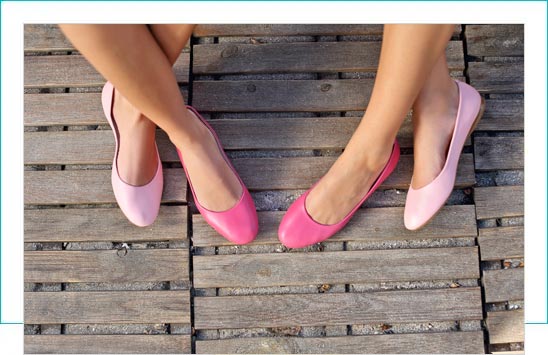
Flat Shoes
I know it sounds insane, but it’s true – flat shoes can cause back pain! You may prefer to wear them for extended periods because they seem like a more comfortable option than high heels, for example, but because they lack vital support, they end up putting more pressure on your ankles, knees, hips – and lower back.
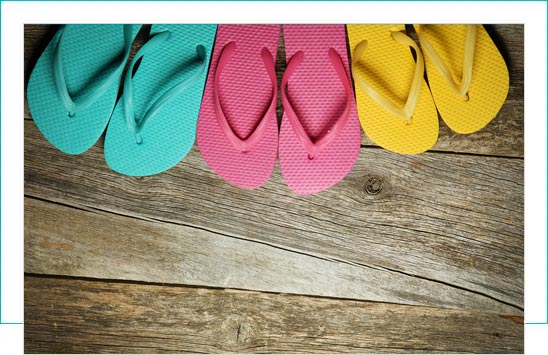
Flip Flops
They seem convenient and all, but in reality, flip flops can lead to back pain, as well. I mean, look at them – do you see any arch support there? I sure don’t – because it’s not there! Flip flops don’t support your feet, legs or lower back and they don’t perform that well in the balance department, either, so do yourself a favor, and save flip flops for occasional trips to the beach.
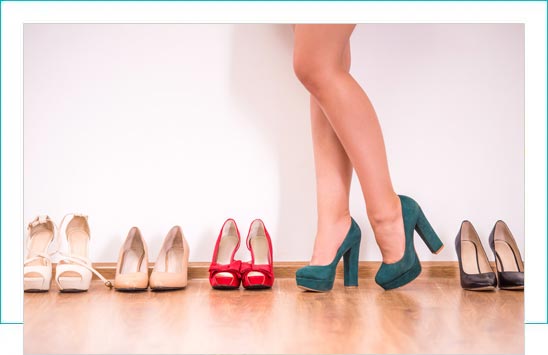
High Heels
While we’re all guilty of trading in comfort for style at one point or another, I strongly advise against picking high heels as your everyday footwear: Whenever you slip on a pair of high heels, your entire posture changes to accommodate your feet’s position, which puts lots of pressure not only on your knees but your spine, as well.

Toning Shoes
Due to their thick, curved soles, these shoes don’t allow your feet to flex naturally. As a result, your muscles need to work more – and while it may sound like a sure recipe for toning your legs, it can also lead to some lower-body discomfort, as well as full-blown back pain.
So, I’d like you to ask yourself: Do these shoes even work – and on the off chance they do, are they worth the back pain?
Frequently Asked Questions (FAQs)

Okay, before I wrap things up, I’d like to take a moment to answer any other questions you might have about the best shoes for back pain – from proper shoe care to a visit to a podiatrist, you’ll find it all below:
Final Thoughts & Recommendations
Okay, it’s about time to announce the winner of the round-up!
All things considered, I do believe that the Asics Men’s Gel Kayano 25 checks out in all the vital areas as the best shoes for back pain – well, for men, anyway.
Oh, and ladies, don’t worry, I didn’t forget about you! To keep things fair, I’d like to include the best women’s choice, as well – and that title goes to New Balance Women’s W1540V2 Running Shoe!
Which ones are your favorites? Let me know in the comments below!
References
- NINDS (2014) Low Back Pain Fact Sheet. (Online) Available from: https://www.ninds.nih.gov/Disorders/Patient-Caregiver-Education/Fact-Sheets/Low-Back-Pain-Fact-Sheet (Accessed 23 February 2021)
- Cleveland Clinic (2016) Shoes Getting Tight? Why Your Feet Change Size Over Time. (Online) Available from: https://health.clevelandclinic.org/shoes-getting-tight-feet-change-size-time/ (Accessed 23 February 2021)
- Donatelli RA., (1987) Abnormal biomechanics of the foot and ankle. (Online) Available from: https://www.ncbi.nlm.nih.gov/pubmed/18794588 (Accessed 23 February 2021)
- Fletcher, J. (2017) What is overpronation? (Online) Available from: https://www.medicalnewstoday.com/articles/320383.php (Accessed 23 February 2021)
- Leonard, J. (2018) What to know about supination of the foot. (Online) Available from: https://www.medicalnewstoday.com/articles/320582.php (Accessed 23 February 2021)
- Newman, T. (2018) Where do blisters come from? (Online) Available from: https://www.medicalnewstoday.com/articles/264783.php (Accessed 23 February 2021)
- The Spine Health Institute, How High Heels Affect Your Body. (Online) Available from: http://www.thespinehealthinstitute.com/news-room/health-blog/how-high-heels-affect-your-body (Accessed 23 February 2021)
- Cronin, NJ. (2014) The effects of high heeled shoes on female gait: A review. (Online) Available from: https://www.ncbi.nlm.nih.gov/pubmed/24508305 (Accessed 23 February 2021)












